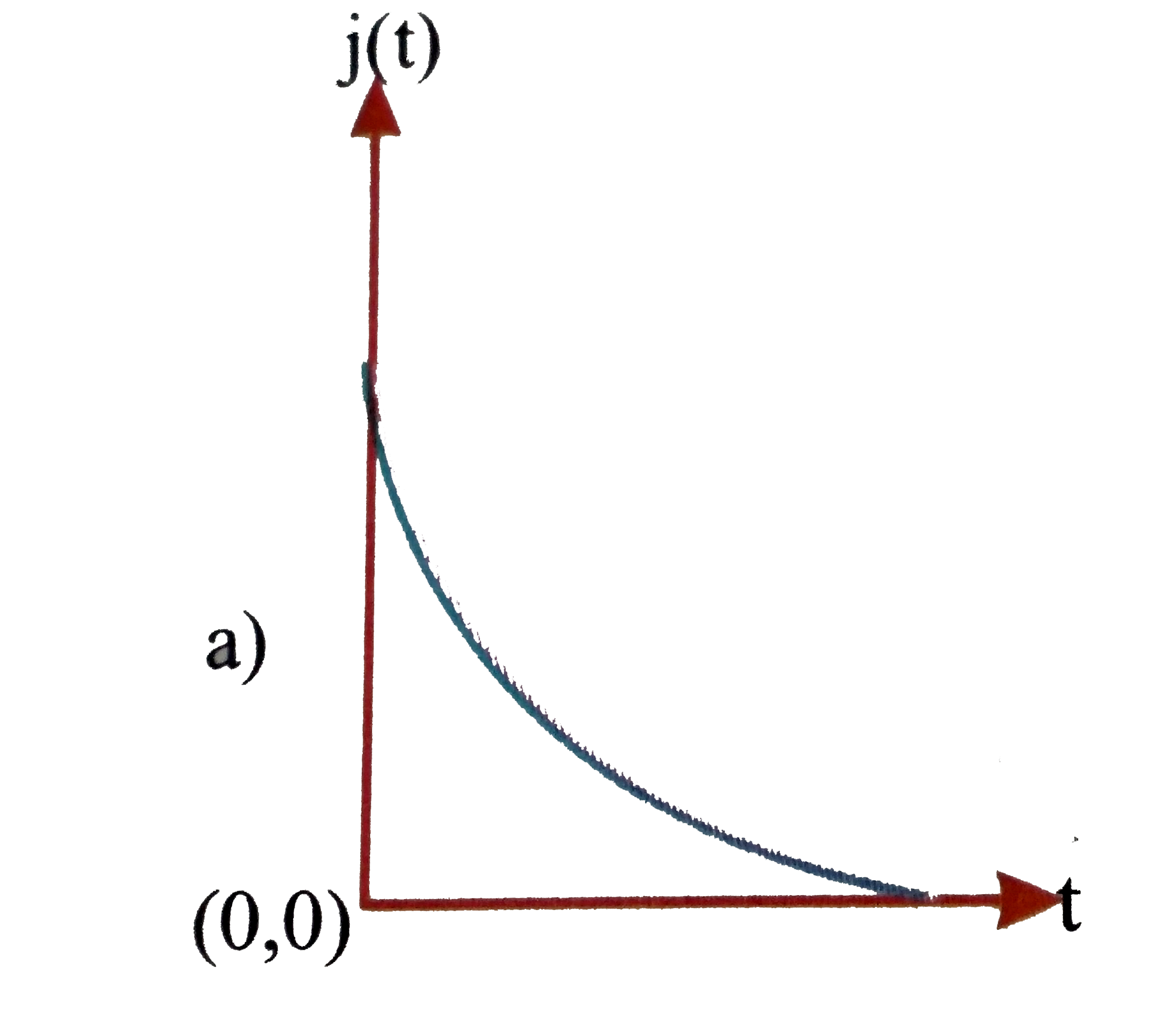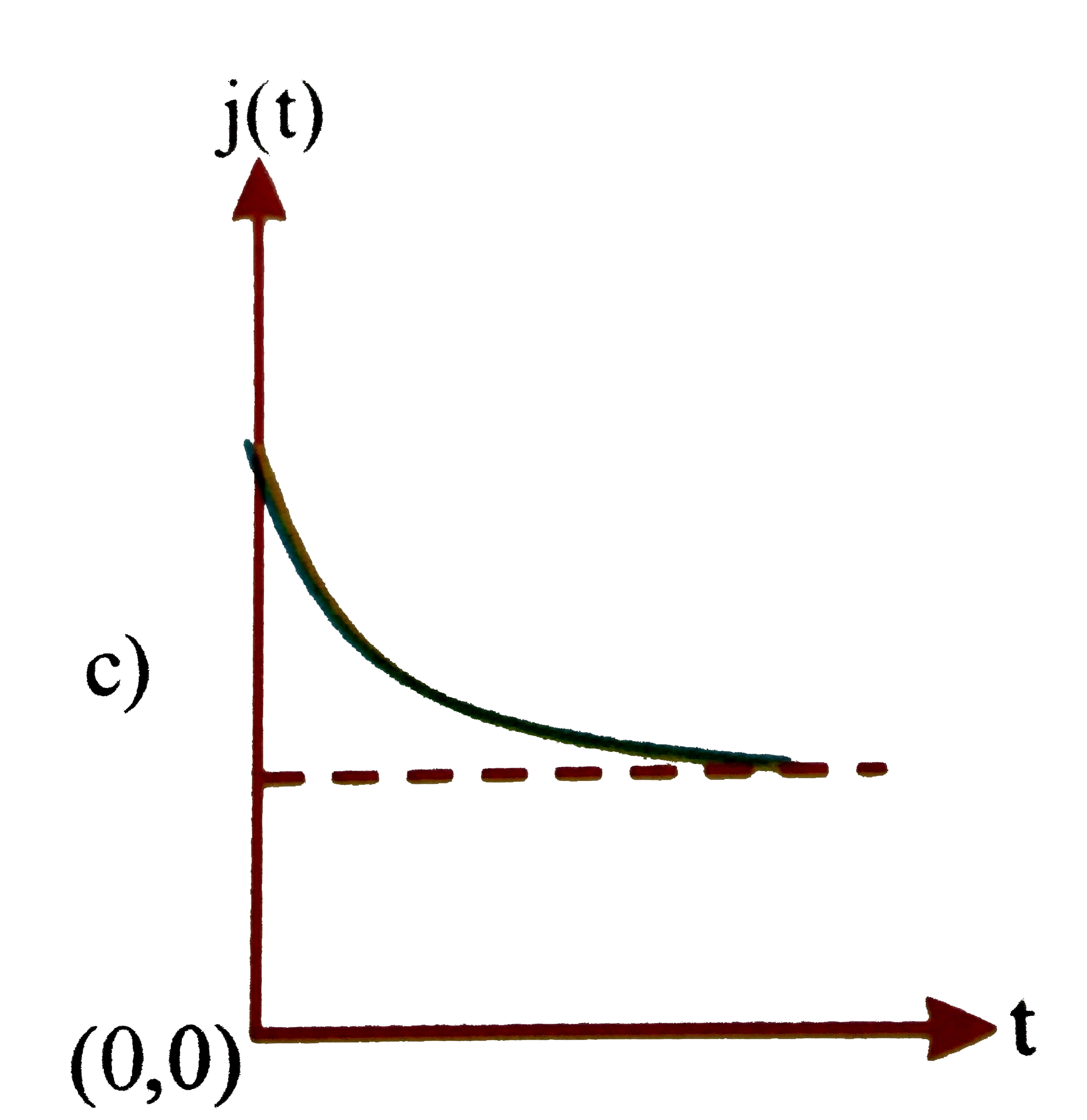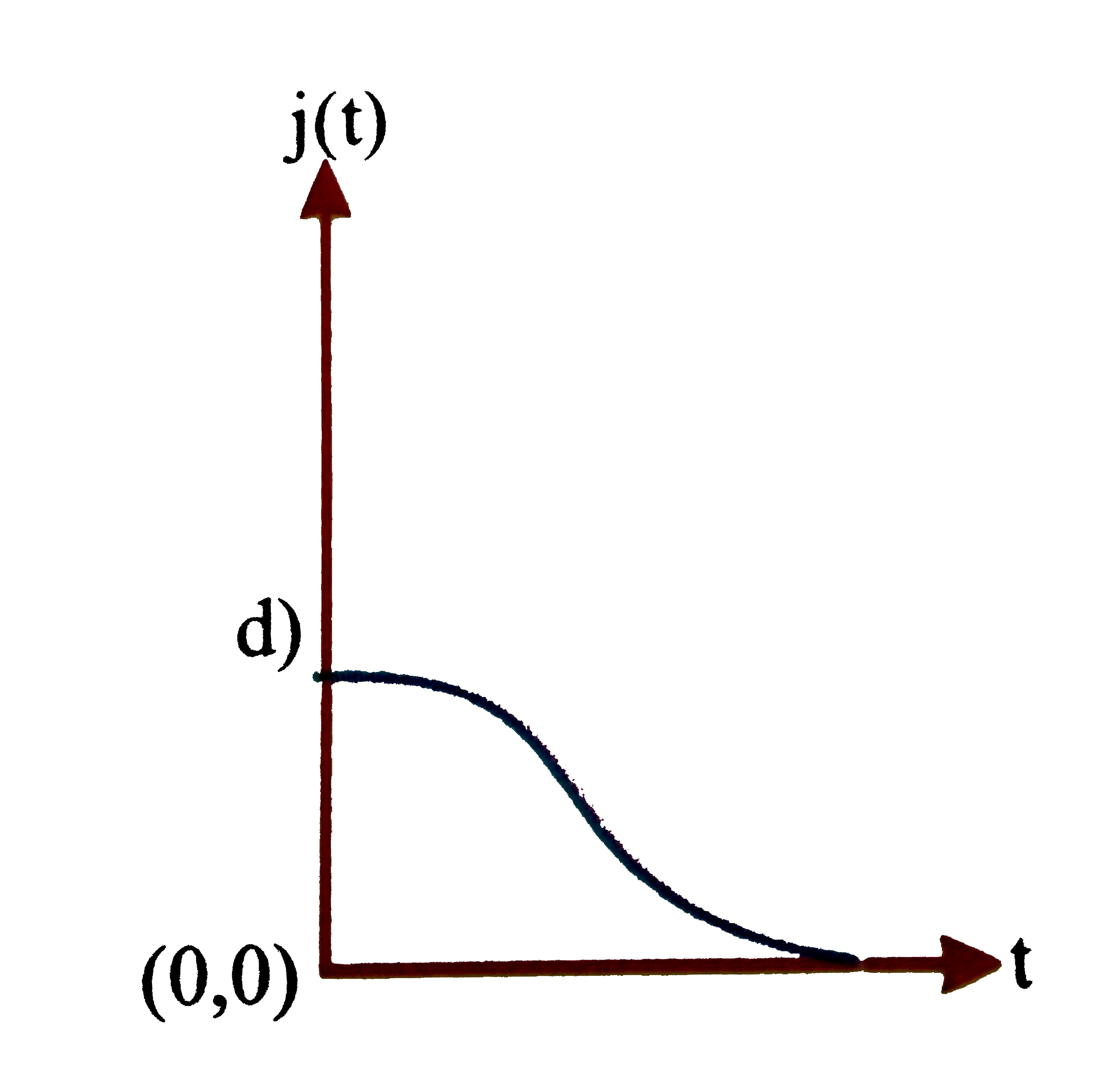An infinite line charge of uniform electric charge density λ lies along the axis of an electrically conducting infinite cylindrical shell of radius R. At time t=0, the space inside the cylinder is filled with a material of permittivity ε and electrical conductivity σ. The electrical conduction in the material follows Ohm's law. Which one of the following graphs best describes the subsequent variation of the magnitude of current density j(t) at any point in the material ?
A

B

C

D

Video Solution
Text Solution
The correct Answer is:A
Let λ(t) represent the linear density of charge as a function of timee on the inner wire. λ0 be the charge density at t=0 on the inner wire. Let β(t) represent the linear density on the outer cylinder.
λ(t)+β(t)=λ0 by conservation of charge. the electric field at P as a function of time t the E(t) then E(r,t)=λ(t)2πε0.εr
∴j(t)=σ(r,t)=(σ2πε0ε)λ(t)r
∴j(t)∝λ(t)
clearly λ(t)→0 as o∞ as all the charge will eventually migrate to the outer surface.
Let the cross-sectional radius of the inner wire be
r0
Potential difference between the inner and outer cylinder
λ(t)2πε0ε∫Rr0drr=λ(t)2πε0εlog(Rr0)
Now consider the cylindrical shell of thickness dr let the length of the cylinder be unit elementary resistnace
=λ(t)2πε0ε∫Rr0drr=λ(t)2πε0εlog(Rr0)
total resistance =⎛⎜
⎜⎝log(Rr0)2πσ [per unit length]
−λ(t)2πε0εlog(Rr0)=log(R)r02πσλ(t)
⇒λ(t)=−cλ(t)
Which is an exponentially
|
Updated on:21/07/2023
Topper's Solved these Questions
- BOOK - NARAYNACHAPTER - CURRENT ELECTRICITYEXERCISE - Level 643videos
CURRENT ELECTRICITY
- BOOK - NARAYNACHAPTER - CURRENT ELECTRICITYEXERCISE - NCERT Based Questions13videos
CURRENT ELECTRICITY
- BOOK - NARAYNACHAPTER - COMMUNICATION SYSTEMEXERCISE - Level-II(H.W)25videos
COMMUNICATION SYSTEM
- BOOK - NARAYNACHAPTER - DUAL NATURE OF RADIATION AND MATTEREXERCISE - ASSERTION AND REASON15videos
DUAL NATURE OF RADIATION AND MATTER
Similar Questions
A long charged cylinder of linear charge density λ is surrounded by a hollow co-axial conducting cyclinder. What is the electric field in the space between the two cylinders ?
View SolutionA long charged cylinder of linear charge density λ surrounded by a hollow co-axial conducting cylinder. What is the electric field in the space between the two cylinders?
View Solution
Knowledge Check
- Question 1 - Select One
Which of the following conducts electricity ?
AFused NaClBCO2CBr2DSi - Question 2 - Select One
Which of the following will not conduct electricity ?
AK+Cl− (Aqueous solution)BK+Cl− (Solid state)CNa+Cl− (Fused state)DGraphite - Question 3 - Select One
Which of the following shows electrical conduction ?
ADiamondBSodiumCGraphiteDPatassium
Which one of the following solutions will not conduct electricity?
View SolutionWhich of the following show electrical conductance
View SolutionWhich of the following can conduct electricity in?
View SolutionWhich of the following shows electrical conduction ?
View SolutionWhich amongst the following will not conduct electricity?
View Solution
